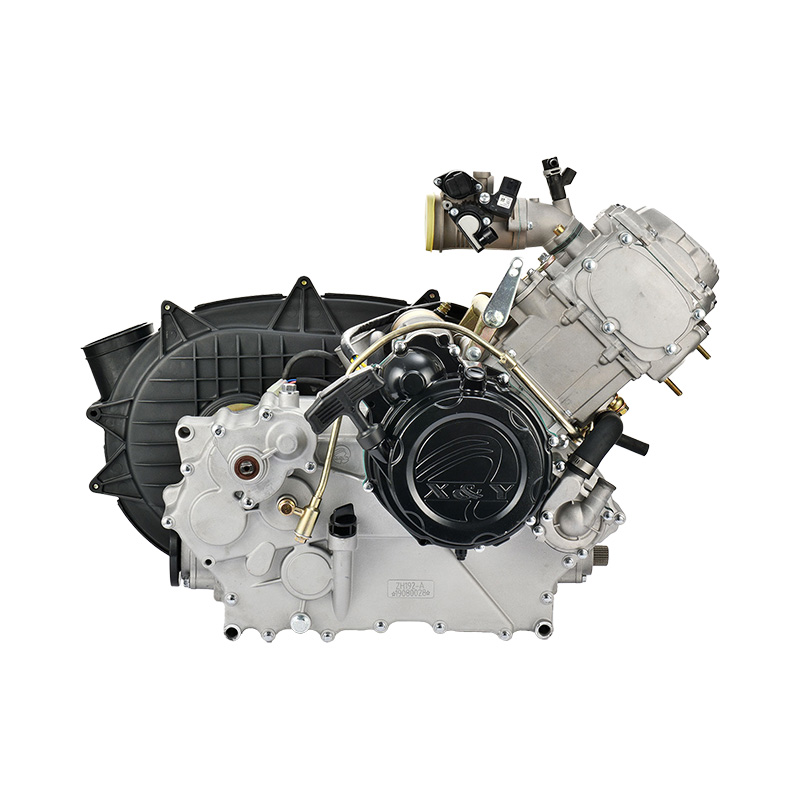
Type of Engine
2021-08-20
Type of engine
A gasoline engine is an engine that uses gasoline as fuel. Because gasoline has low viscosity and evaporates quickly, gasoline injection system can be used to inject gasoline into the cylinder. After compression reaches a certain temperature and pressure, it is ignited with a spark plug to expand the gas and do work. Gasoline engines are characterized by high speed, simple structure, light weight, low cost, stable operation, and convenient use and maintenance. According to different fuel supply methods, gasoline engines can be divided into two categories: carburetor type and injection type. Carburetors are commonly found on engines of older models, and most engines now use jet fuel supply. In an injection gasoline engine, gasoline can be injected at the intake port or directly into the cylinder during the intake stroke; the fuel injection process can be controlled by a computer program, and the fuel can be more evenly distributed to each cylinder; at the same time, because there is no need The throat pipe reduces the resistance of the factory air intake, etc., which can increase the average effective pressure and thermal efficiency in the cylinder; in addition, it can also weaken or avoid knocking combustion.
According to different characteristics, automobile engines are divided into the following categories:
1. Classification according to the way of piston movement: Piston type internal combustion engines can be divided into two types: reciprocating piston type and rotary piston type. The former piston makes a reciprocating linear movement in the cylinder, and the latter piston makes a rotary movement in the cylinder.
2. Classification according to the intake system: internal combustion engines can be divided into naturally aspirated engines and forced intake engines according to whether the intake system adopts supercharging. If the intake is close to the atmosphere, it is a non-supercharged internal combustion engine or a naturally aspirated internal combustion engine; if the intake pressure is increased by a supercharger and the intake density increases, it is a supercharged internal combustion engine. Supercharging can increase the power of the internal combustion engine.
3. Classification according to the cylinder arrangement: internal combustion engines can be divided into single-row, double-row and three-row types according to different cylinder arrangements. Each cylinder of a single-row engine is arranged in a row, which is generally arranged vertically, but in order to reduce the height, the cylinders are sometimes arranged inclined or even horizontal. A double-row engine arranges the cylinders in two rows. The angle between the two rows is less than 180°, which is called a V-type engine. If the angle between the two rows is 180°, it is called an opposed engine. The three-row type arranges the cylinders in three rows to become a W-type engine.
4. Classification according to the number of cylinders: Internal combustion engines can be divided into single-cylinder engines and multi-cylinder engines according to the number of cylinders. An engine with only one cylinder is called a single-cylinder engine; an engine with more than two cylinders is called a multi-cylinder engine. For example, two-cylinder, three-cylinder, four-cylinder, five-cylinder, six-cylinder, eight-cylinder, twelve-cylinder, sixteen-cylinder, etc. are all multi-cylinder engines.
5. Classification according to cooling methods: internal combustion engines can be divided into water-cooled engines and air-cooled engines according to different cooling methods. The water-cooled engine uses the coolant circulating in the cylinder block and cylinder head cooling water jacket as the cooling medium for cooling; while the air-cooled engine uses the air flowing between the cylinder block and the outer surface fins of the cylinder head as the cooling medium Cooled. The water-cooled engine cools evenly.
6. Classification according to stroke: Internal combustion engines can be divided into four-stroke internal combustion engines and two-stroke internal combustion engines according to the number of strokes required to complete a working cycle. Turn the crankshaft two revolutions (720°) and the piston reciprocates up and down in the cylinder for four strokes. The internal combustion engine that completes a working cycle is called a four-stroke internal combustion engine; while turning the crankshaft one revolution (360°), the piston reciprocates up and down in the cylinder An internal combustion engine that moves two strokes and completes a working cycle is called a two-stroke internal combustion engine.
7. Classified by valve mechanism: side valve engine, side camshaft engine, overhead camshaft engine, variable gas engine and valve mechanism engine.
8. Classified by fuel supply mode: carburetor engine, electronic injection engine, direct injection engine.
9. According to the fuel used: internal combustion engines can be divided into gasoline engines and diesel engines according to the different fuels used. An internal combustion engine that uses gasoline as fuel is called a gasoline engine; an internal combustion engine that uses diesel as a fuel is called a diesel engine. Compared with diesel engines, gasoline engines have their own characteristics; gasoline engines have high speed, low quality, low noise, easy starting, and low manufacturing costs; diesel engines have large compression ratios, high thermal efficiency, and higher economic performance and emission performance than gasoline engines.


